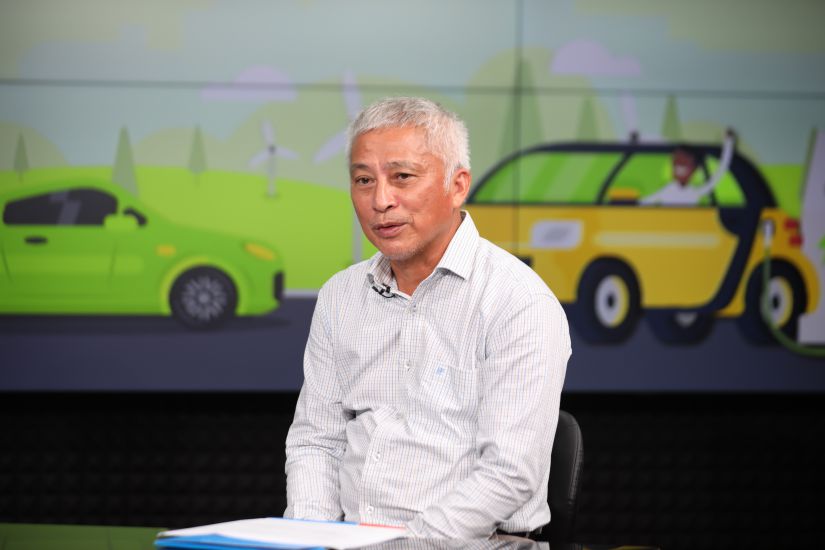The capital is continuously in the top of the most polluted cities in the world
In recent days, Hanoi's air quality has continued to be poor. Ms. Doan Phuong Lan (Tay Mo ward, Hanoi) said that every morning she and her relatives are easily stressed when looking at the fine dust and air pollution index in Hanoi through the phone screen. "In the past few days, Hanoi's sky has been clearly polluted. When I woke up in the morning, I saw the apartment buildings blurred. My children are on summer vacation at home, but my family does not dare to open windows or balconies, and the whole day the doors are closed with air conditioners and air purifiers turned on. There were times when I thought about moving to another place to live without the ability" - Ms. Lan said.

Discussing this issue with Lao Dong Newspaper, Dr. Hoang Duong Tung - Chairman of the Vietnam Clean Air Network said: It is true that in recent days, Hanoi's air quality has been very poor, even though it is not the peak season. In recent years, especially in the winter, air quality monitoring data showing PM2.5 fine dust has always been high, the AQI indices for the hour and day are always at red, purple, and brown levels, which is very alarming.
" more worryingly, these indicators show no signs of decreasing but have increased in concentration and number of days in the year, exceeding the permitted standards. Why is this concentration high? This is because we do not control waste well. Waste sources from socio-economic activities, production, transportation... In Hanoi, we identify pollution sources such as industrial production, two of which are from personal vehicles, construction, garbage burning..." - Dr. Hoang Duong Tung said.
"In particular, personal vehicles including cars, motorbikes... are one of the main sources of air pollution. This has been scientifically proven, reflecting the trend of the world, that in the inner city of other cities, not just Hanoi, cities around the world have applied many methods to reduce air pollution" - Dr. Hoang Duong Tung emphasized.
Air dust pollution is commensurate with the rate of people with cancer
A study by the World Health Organization WHO and the International Agency for Research on Cancer IARC has shown a correlation between air dust pollution levels and the rate of people with cancer. Specifically, the density of PM10 in the air increases to 10 μg/m3, the cancer rate increases by 22%, and the PM2.5 density increases by 10 μg/m3, the lung cancer rate increases by 36%.
PM2.5 and PM10 enter the respiratory tract when humans breathe, but the level of penetration depends on the size of the dust parenchyma. While PM10 enters the body through the airway and accumulates in the lungs, PM2.5 is especially dangerous because it is so small that it can squeeze into the pulmonary pockets, pulmonary veins and invade the blood circulation system. PM2.5 is the cause of blood poisoning, blood clotting is difficult, affecting the circulatory system, weakening the nervous system that controls the functioning of the heart muscle, causing cardiovascular diseases.
Fine dust particles penetrate the body, reducing lung function, chronic bronchitis, causing asthma and lung cancer. They are the cause of placental blood poisoning, causing slow fetal development. Children born with low birth weight are more likely to have neurological impairment and autism. In addition, experts from the Environmental Protection Agency (EPA) say that PM2.5 particles contain many heavy metals that can cause cancer, or impact DNA and cause genetic changes.
Notably, the source of PM10 and PM2.5 in large urban areas is mostly from traffic emissions, construction works, roads and industrial factories.
According to experts, one of the "criminals" causing pollution is gasoline motorbikes, as well as gasoline cars with large emissions. Therefore, converting gasoline and oil vehicles to electric vehicles as well as solutions to develop public transportation is an urgent requirement.
In order to contribute to solving the pollution problem, the Prime Minister recently signed and issued Directive No. 20/CT-TTg on a number of urgent and drastic tasks to prevent and solve environmental pollution. The Directive clearly states that solutions and measures are being implemented for organizations and individuals to change vehicles and routes until July 1, 2026 so that there are no gasoline-powered motorbikes in Ring Road 1.
From 2028, there will be no motorbikes, limiting private cars running on gasoline to circulate on Ring Road 1, Ring Road 2; from 2030, continue to expand implementation on Ring Road 3.
"With this policy, once again, the Party and the Government have shown determination and determination to the end in solving environmental problems, including air pollution with clear regulations on measures, providing a roadmap, clearly defining specific times to implement solutions... At the same time, there are specific assignments to localities and sectors for implementation" - Dr. Hoang Duong Tung commented.








